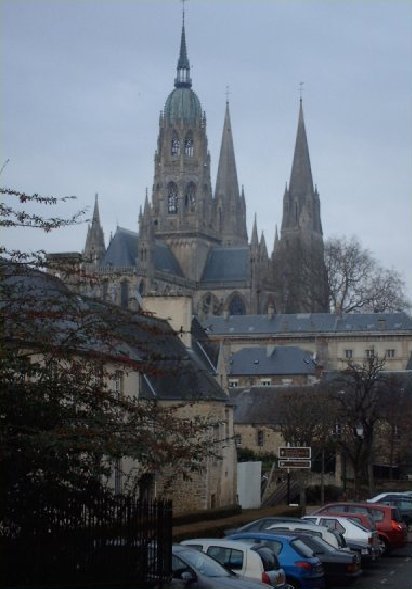Normandy's Churches: A Historical Overview
Abbeys and Cathedrals
The history of Normandy is closely tied to that of its many large abbeys and cathedrals. The earliest were established in Normandy from the fifth century onwards. In the eleventh century Normandy was a very competitive place. The nobles went to great lengths to make sure that they built bigger and finer abbeys, monasteries and churches than anybody else was doing. In addition, there was a general upsurge throughout western Europe at the start of the eleventh century in the building of churches and other religious institutions as a result of fear that the turn of the millenium would mean the apocalyptic end of the world.
Of the 120 or so abbeys and monasteries that existed in Normandy at the peak of their existence, almost 60 have survived in some form down to today. There are a few that are still functioning as religious institutions down to the present day, such as Le Bec-Hellouin, which had connections with William the Conqueror, or the Abbey at Soligny, which is run by a fraternity of Trappist monks.
It has been said that Normandy possesses one of the finest collections of stained glass windows in the whole of France, and in terms of the sacred art contained within its abbeys, churches and other religious institutions, it is one of the most important regions in France.
The 'Norman' style of church architecture is seen in other places, notably England, Wales, Southern Italy, Sicily and parts of the Near East. This is due to the militant policies of the Normans at that time, notably seen in the invasion of England in 1066 by William the Conqueror.
Architectural Styles: Periods
| Carolingian | 800s-900s |
| Romanesque | 1000-1100s |
| Gothic | Late 1100s-1400s |
| Renaissance | 1400s-1600s |
Romanesque Style
The Romanesque style developed towards the end of the first millenium, inspired by the old Roman buildings, or their ruins, that were still to be seen around the country. Many materials were actually taken from these Roman buildings or ruins in order to construct the new Romanesque style churches, abbeys, monasteries or castles. This style later developed into the Gothic style.
Overview of Romanesque architecture.




 Contact Us
Contact Us